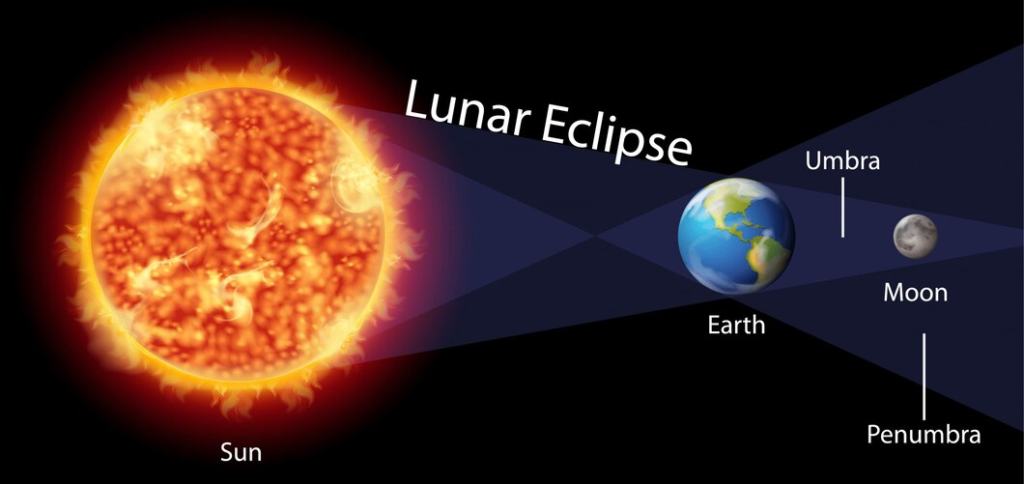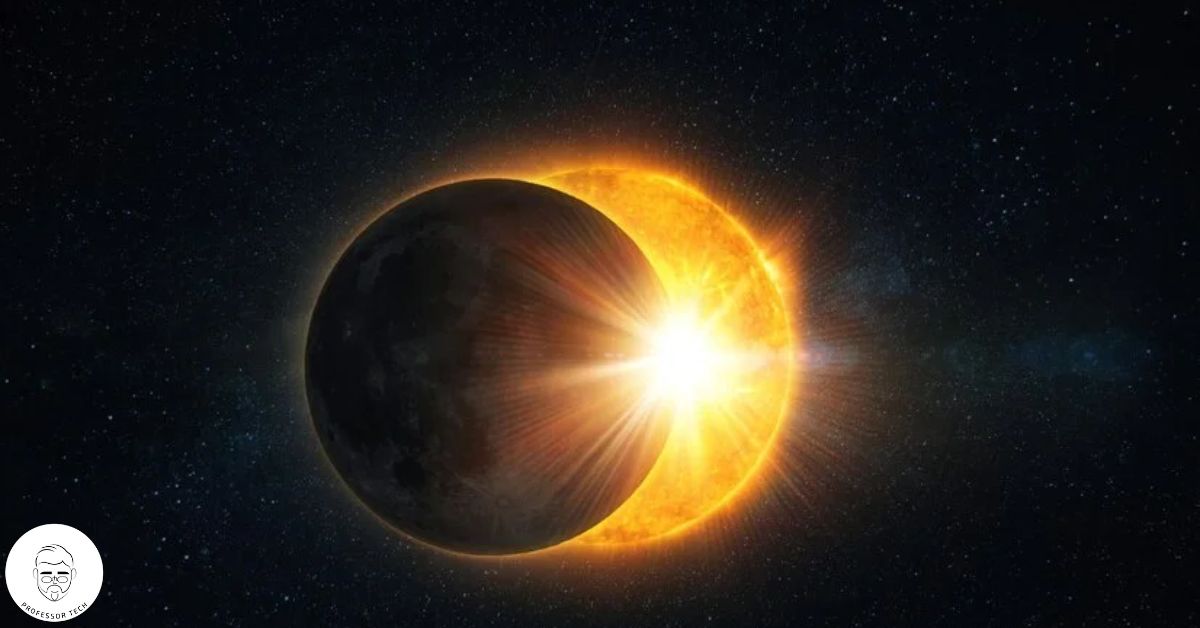There aren’t any total lunar eclipses this year, but there are two “central” solar eclipses, one of which will cover the whole United States from Texas to New England and be widely watched.

Eclipses of the Sun and Moon can happen up to seven times a year, but the last one was in 1982. The
fewest that can occur are four. In 2024, we will have the four-event minimum. In April, a total solar eclipse
will cross North America. In October, there will be an annular solar eclipse. But the two lunar eclipses in
2024 will be hard to see. Things are going very similarly to how they did in 2023. You can jump right to
the details of what happened this year if you want to, or you can keep reading to learn more about
eclipses in general.
Why does Eclipse Happen?
A solar eclipse, like the one seen from coast to coast in the U.S. in August 2017, only happens when the
Moon is new. This is when the lunar disk passes directly between us and the Sun, casting its shadow on
the Earth’s surface. On the other hand, a lunar eclipse happens when the Moon is full and moves
through Earth’s shadow.
Because the Moon’s orbit is tilted about 5° to Earth’s orbital plane, these alignments don’t happen every
new or full Moon. The Sun, Earth, and Moon only line up just right once in every eclipse. (That’s called
syzygy in the proper language.) The above diagram shows that these alignments happen every six
months to a year. After the last eclipse in 2023 in the middle of October, the first eclipse of 2024 won’t
happen until April 8.
LUANER ECLIPSES
There are three kinds of lunar eclipses: total, partial, and penumbral. They depend on how far the full
The moon goes into or near the umbra, the dark center shadow of the Earth. If the Moon moves in,
partial phases occur before and after the total eclipse. That was the case during the highly-publicized
event in September 2015 was the last of four lunar eclipses in a row! Four eclipses rarely happen
in a row. The last one occurred in 2003–2004, and the next one won’t start until 2032.

As shown in this picture, the Moon will only go through partial phases if it only partially enters the umbra.
You will see parts of the Moon in almost full sunlight and parts of it deep in the reddish umbral shadow.
Even if the Moon’s disk goes just outside the umbra, it will still be in Earth’s weak penumbral shadow.
Someone with sharp eyes will notice that one side of the full Moon’s disk has a dark spot. In the year
2020, there were four penumbral lunar eclipses. Lucky for us, we can see every lunar eclipse from
anywhere on Earth as long as the Moon is above the horizon.
SOLAR ECLIPSES
Total and annular solar eclipses happen when the Moon passes directly in front of the Sun as seen from
Earth. As the image below shows, these “central” solar eclipses can only happen every two weeks when
the Moon crosses the ecliptic yearly on one of its two nodal crossings. On the other hand, the geometric
window for partial solar eclipses is longer about five weeks.
It is called a total eclipse if the Moon completely blocks the Sun. When the Sun’s bright disk is completely
covered, its ghostly white outer atmosphere, called the corona, is briefly seen for seconds to minutes.
The Moon sometimes moves right before the Sun but doesn’t completely cover it. At those times, it’s
likely because the Moon is farther away from Earth than usual. (It takes about 5% of the Moon’s orbit to
make it not perfectly round.) In this geometric situation, you can see a ring, or annulus, of sunlight around
the moon disk. This is called an annular eclipse. About as often as total eclipses of the Sun happen,
annular eclipses do too.
You can see a total lunar eclipse from about half of Earth’s surface. But you can’t see a total or annular
solar eclipse from very far away because the Moon casts a much smaller umbral shadow than Earth
does, and you have to be in that shadow to see the event. The only place on Earth’s surface where you
can see the fully eclipsed Sun is a narrow path, usually only 100 miles (160 km) wide. Outside of that
path, about half of the Earth’s daylit hemisphere can see a partial solar eclipse, in which the Moon blocks
out part of the Sun.
It is often necessary to travel a long way to get to the path of a total or annular eclipse. For example, in
November 2013, planeloads of people who wanted to see the eclipse flocked to a remote part of northern
Kenya to see just 11 seconds of totality. About 15 cruise ships gathered on the eclipse path on December
4, 2021, in a remote Southern Ocean miles northeast of the Antarctic Peninsula. But only one of those
ships could avoid the clouds in the early morning and catch a glimpse of totality. What a commitment!
On average, a total solar eclipse happens in every part of the world every 375 years. Right now, the
The Northern Hemisphere has a slight statistical edge. Check out Sky & Telescope’s beautiful eclipse globe to
learn more about where total solar eclipses happen worldwide.
The Four Esclips In 2024
This page gives you a quick look at the four eclipses in 2024. As the dates get closer, you can read more
about it in Sky & Telescope or on this website. Most of the time, times are given in Universal Time (UT).
Change these to match your time zone. For example, PST equals UT-8, and EST is similar to UT-5.
(Don’t forget to account for daylight saving time, also known as “summer” time, which runs from PDT to
EDT to UT–4 and so on.)
Type of Date Highest Visibility
- 25th MarchMoon in the shape of a penumbral at 7:13 UT North and South America
- April 8thTotal eclipse of the Sun at 18:17 United States of America
- August 18Eclipse of the Moon in part at 2:44 Africa, North and South America, Europe, and Asia
- Eclipse of the Sun on October 2 at 2:44 UTSW South America and the SW Pacific Ocean



